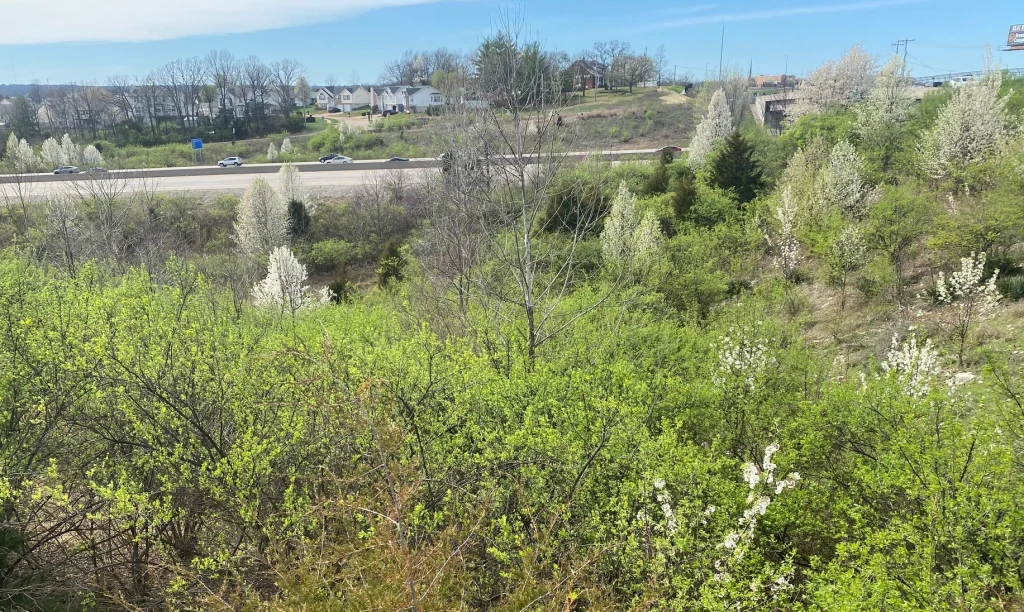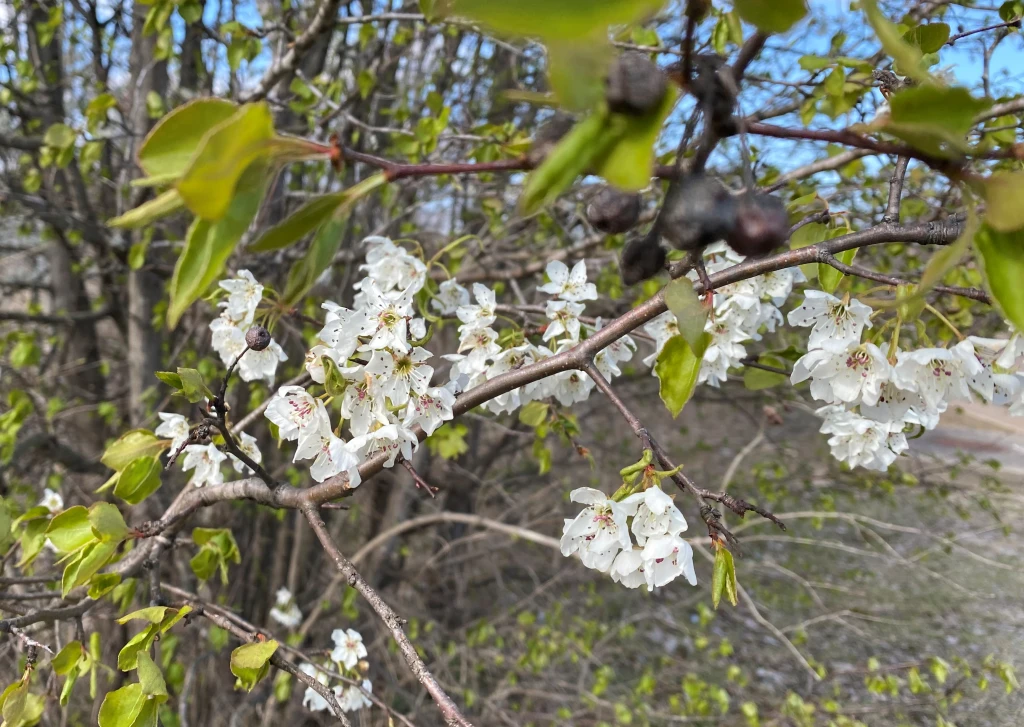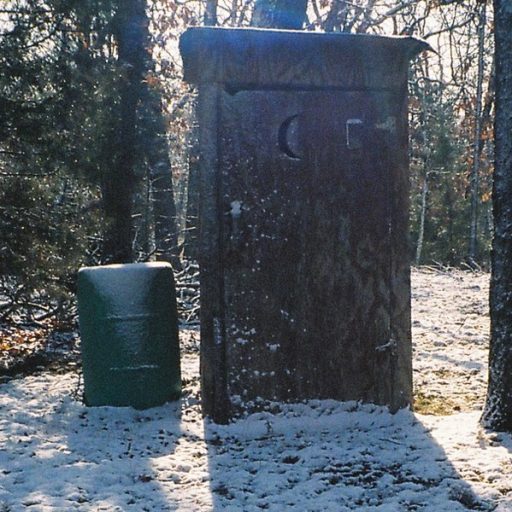Frequently I hear people talk about “cutting Callerys,” but I am always disappointed to realize they are saying calories and not the generic name for those nasty Bradford pear trees that are out in full force again this spring.

Any spring driving trip near a populated area shows that the invasive species is proliferating. It is particularly disheartening to see roadside subdivisions populated with the popular landscape tree, and hundreds of the white fluff balls growing wild in nearby rights-of-way, eliminating opportunities for native plants.
Fortunately there are a couple of strong efforts to turn the tide. The most certain step in the right direction is a “buyback” program coordinated by the state Department of Conservation in partnership with the Missouri Invasive Plat Council, Forest ReLeaf of Missouri, and the Forrest Keeling Nursery.
State residents who remove a Callery pear tree from their property can receive a free native tree from a participating nursery on April 23. Participants must register before April 15 and provide a photo of the tree they eliminated. For more information and registration, visit moinvasives.org.

The other positive step to curb the incursion is beginning to make progress in the state legislature. House Bill 2412 has passed from committee to the floor of the House of Representatives for a potential vote. The companion Senate Bill 1281 is awaiting committee approval. Contact your local representative and ask them to support the legislation.
The proposal would prohibit the sale of Callery pear trees, Japanese honeysuckle, winter creeper, burning bush, and sericea lespedeza. Those five represent the worst of more than 140 invasive plants known in the state, according to the Missouri Invasive Plant Council.
“If passed, enforcement may take effect January 1, 2026, with the exception that burning bush and Callery pear plants acquired by a licensed Missouri wholesale or retail plant nursery before January 1, 2025, would be exempt from enforcement until January 1, 2028,” the council’s website states. “This bill is not intended to put any plant grower or seller out of business.”
Opponents of the legislation say it restricts personal freedom for landowners to plant what they want, but it is even more of an infringement the rights of neighboring property owners where the invasive species spread, causing expensive control measures, and threats to livestock, wildlife, forest products and outdoor recreation industries.
According to a press release from the conservation department, the Callery pear rose to fame in the 1960s as a popular ornamental landscape tree.
“This tree species became popular because it was inexpensive, it grew quickly, and provided showy white blooms in the spring,” said Russell Hinnah, a state forestry supervisor. “But the bad outweighs the good. Different varieties of the tree were planted close to each other, resulting in cross-pollination and spreading the tree nearly everywhere.”
The ability for Callery pear trees to cross-pollinate is why many roadsides, rights-of-way, parks, and other natural areas are filled with more white blooms every spring. They quickly invade open areas and crowd out native plants.
The trees are known for their stinky smell, and their poor branch structure, often losing limbs or splitting apart in severe weather.
“The best decision is to plant a tree species native to Missouri, and there are many great substitutions,” Hinnah said. “Serviceberry trees grow similar white blooms in the spring, and they have small red fruits that attract wildlife.”
Other alternatives include hawthorn, eastern redbud, and Missouri’s state tree, the flowering dogwood. Hawthorns provide bountiful fruit and attractive fall color, while dogwoods thrive in shady areas, but can be difficult to grow.
Learn more about native trees and landscaping online at mdc.mo.gov.
